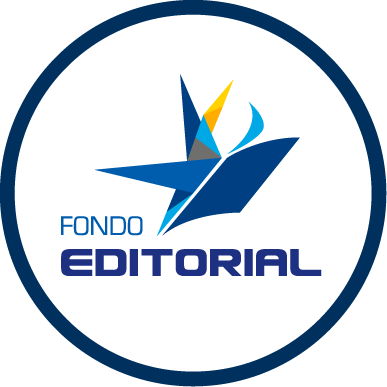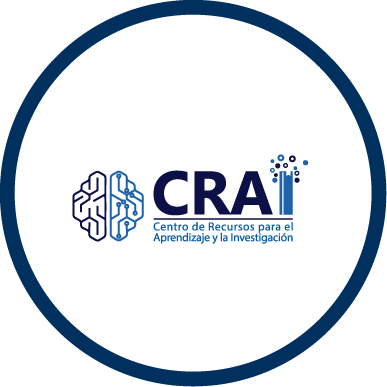A machine vision system using circular autoregressive models for rapid recognition of salmonella typhimurium
The objective of this research was to develop a machine vision system using image processing and statistical modeling techniques to identify and enumerate bacteria on slides containing Salmonella typhimurium. Pictures of bacterial cells were acquired with a CCD camera attached to a motorized fluores...
Saved in:
| Main Authors: | , , , |
|---|---|
| Format: | Digital |
| Language: | spa |
| Published: |
UNIVERSIDAD ANTONIO NARIÑO
2013
|
| Subjects: | |
| Online Access: | https://revistas.uan.edu.co/index.php/ingeuan/article/view/333 |
| Tags: |
Add Tag
No Tags, Be the first to tag this record!
|
| _version_ | 1812645014281388032 |
|---|---|
| author | Trujillo, O. Griffis, C. L. Li, Y. Slavik, M. F. |
| author_facet | Trujillo, O. Griffis, C. L. Li, Y. Slavik, M. F. |
| author_sort | Trujillo, O. |
| collection | OJS |
| description | The objective of this research was to develop a machine vision system using image processing and statistical modeling techniques to identify and enumerate bacteria on slides containing Salmonella typhimurium. Pictures of bacterial cells were acquired with a CCD camera attached to a motorized fluorescence microscope. A shape boundary modeling technique, based on the use of circular autoregressive model parameters, was used. A feature weighting classifier was trained with ten images belonging to each shape class (rod shape and circle shape). In order to enhance the discrimination of circular shapes, a size range was added to the recognition algorithm. Experimental results showed that the model parameters could be used as descriptors of shape boundaries detected in digitized binary images of bacterial cells. The introduction of the rotated coordinate method and the circular size restriction, reduced the differences between automated and manual recognition/enumeration from 7% to less than 1%. The computer analyzed each image in approximately 5 s (a total of 2 h including sample preparation), while the bacteriologist spent an average of 1 min for each image. |
| format | Digital |
| id | revistas.uan.edu.co-article-333 |
| institution | Revista INGE@UAN |
| language | spa |
| publishDate | 2013 |
| publisher | UNIVERSIDAD ANTONIO NARIÑO |
| record_format | ojs |
| spelling | revistas.uan.edu.co-article-3332021-02-16T16:52:14Z A machine vision system using circular autoregressive models for rapid recognition of salmonella typhimurium A machine vision system using circular autoregressive models for rapid recognition of salmonella typhimurium Trujillo, O. Griffis, C. L. Li, Y. Slavik, M. F. Bacteria detection fluorescence microscopy machine vision image analysis pattern recognition The objective of this research was to develop a machine vision system using image processing and statistical modeling techniques to identify and enumerate bacteria on slides containing Salmonella typhimurium. Pictures of bacterial cells were acquired with a CCD camera attached to a motorized fluorescence microscope. A shape boundary modeling technique, based on the use of circular autoregressive model parameters, was used. A feature weighting classifier was trained with ten images belonging to each shape class (rod shape and circle shape). In order to enhance the discrimination of circular shapes, a size range was added to the recognition algorithm. Experimental results showed that the model parameters could be used as descriptors of shape boundaries detected in digitized binary images of bacterial cells. The introduction of the rotated coordinate method and the circular size restriction, reduced the differences between automated and manual recognition/enumeration from 7% to less than 1%. The computer analyzed each image in approximately 5 s (a total of 2 h including sample preparation), while the bacteriologist spent an average of 1 min for each image. The objective of this research was to develop a machine vision system using image processing and statistical modeling techniques to identify and enumerate bacteria on slides containing Salmonella typhimurium. Pictures of bacterial cells were acquired with a CCD camera attached to a motorized fluorescence microscope. A shape boundary modeling technique, based on the use of circular autoregressive model parameters, was used. A feature weighting classifier was trained with ten images belonging to each shape class (rod shape and circle shape). In order to enhance the discrimination of circular shapes, a size range was added to the recognition algorithm. Experimental results showed that the model parameters could be used as descriptors of shape boundaries detected in digitized binary images of bacterial cells. The introduction of the rotated coordinate method and the circular size restriction, reduced the differences between automated and manual recognition/enumeration from 7% to less than 1%. The computer analyzed each image in approximately 5 s (a total of 2 h including sample preparation), while the bacteriologist spent an average of 1 min for each image. UNIVERSIDAD ANTONIO NARIÑO 2013-05-14 info:eu-repo/semantics/article info:eu-repo/semantics/publishedVersion application/pdf https://revistas.uan.edu.co/index.php/ingeuan/article/view/333 INGE@UAN - TENDENCIAS EN LA INGENIERÍA; Vol. 2 Núm. 4 (2012) 2346-1446 2145-0935 spa https://revistas.uan.edu.co/index.php/ingeuan/article/view/333/279 https://creativecommons.org/licenses/by-nc-sa/4.0 |
| spellingShingle | Bacteria detection fluorescence microscopy machine vision image analysis pattern recognition Trujillo, O. Griffis, C. L. Li, Y. Slavik, M. F. A machine vision system using circular autoregressive models for rapid recognition of salmonella typhimurium |
| title | A machine vision system using circular autoregressive models for rapid recognition of salmonella typhimurium |
| title_alt | A machine vision system using circular autoregressive models for rapid recognition of salmonella typhimurium |
| title_full | A machine vision system using circular autoregressive models for rapid recognition of salmonella typhimurium |
| title_fullStr | A machine vision system using circular autoregressive models for rapid recognition of salmonella typhimurium |
| title_full_unstemmed | A machine vision system using circular autoregressive models for rapid recognition of salmonella typhimurium |
| title_short | A machine vision system using circular autoregressive models for rapid recognition of salmonella typhimurium |
| title_sort | machine vision system using circular autoregressive models for rapid recognition of salmonella typhimurium |
| topic | Bacteria detection fluorescence microscopy machine vision image analysis pattern recognition |
| topic_facet | Bacteria detection fluorescence microscopy machine vision image analysis pattern recognition |
| url | https://revistas.uan.edu.co/index.php/ingeuan/article/view/333 |
| work_keys_str_mv | AT trujilloo amachinevisionsystemusingcircularautoregressivemodelsforrapidrecognitionofsalmonellatyphimurium AT griffiscl amachinevisionsystemusingcircularautoregressivemodelsforrapidrecognitionofsalmonellatyphimurium AT liy amachinevisionsystemusingcircularautoregressivemodelsforrapidrecognitionofsalmonellatyphimurium AT slavikmf amachinevisionsystemusingcircularautoregressivemodelsforrapidrecognitionofsalmonellatyphimurium AT trujilloo machinevisionsystemusingcircularautoregressivemodelsforrapidrecognitionofsalmonellatyphimurium AT griffiscl machinevisionsystemusingcircularautoregressivemodelsforrapidrecognitionofsalmonellatyphimurium AT liy machinevisionsystemusingcircularautoregressivemodelsforrapidrecognitionofsalmonellatyphimurium AT slavikmf machinevisionsystemusingcircularautoregressivemodelsforrapidrecognitionofsalmonellatyphimurium |




